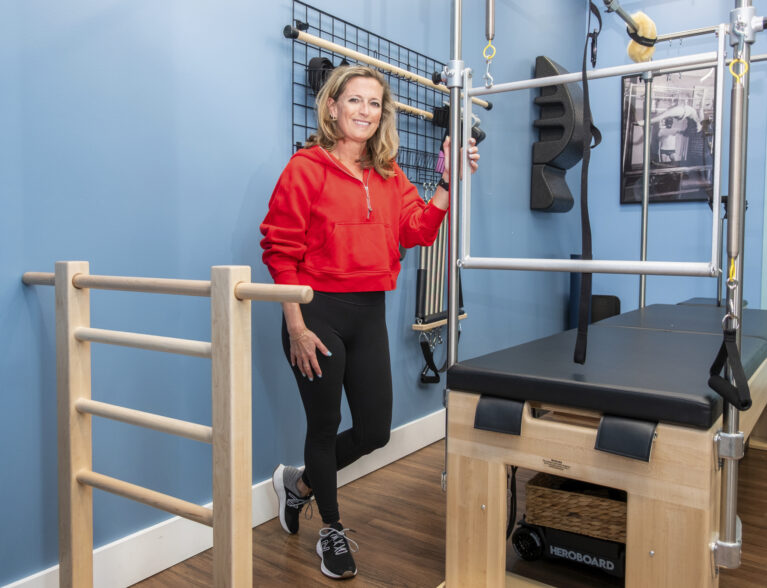
There’s a saying in traditional Chinese medicine: “Stretching your tendons by an inch extends your life by 10 years.” While this may be an optimistic claim, it highlights the importance of maintaining flexible and healthy muscles and tendons for overall well-being and longevity.
Stretching offers many benefits, including improved flexibility, reduced pain, enhanced circulation, and a lower risk of injury.
Stretching is especially crucial for older adults, as aging naturally reduces the elasticity of muscles and joints, leading to stiffness and a decreased range of motion. Regular stretching helps counteract this process by lengthening muscles and improving joint flexibility. Greater flexibility enables older adults to perform daily activities like bending and walking with greater ease and independence.
“Stretching increases flexibility in the joints and ligaments, reducing the risk of injuries,” said Vicki Warburton, an American Sports & Fitness Association certified personal trainer in Vero Beach who also teaches yoga and Pilates. “They’ve got better balance because their muscles are performing the way they need to and there’s less risk of falling. It also helps improve blood circulation and posture.
“The key to stretching is short intervals,” Warburton continued. “Years ago, we were told to hold a stretch for 30 to 60 seconds, but research has shown that holding a stretch for too long can cause the body to resist, sending out a chemical signal that actually tightens the muscle. Instead, a stretch should only be held for 10 to 20 seconds, then relaxed and repeated.
“Stretching lengthens the muscles that attach to tendons and ligaments. Ligaments connect bone to bone, and tendons connect muscle to bone. When muscles are extremely tight, they pull on the joint area, leading to inflammation and conditions like tendonitis.”
Improving muscle elasticity and flexibility enhances mobility. Since the movement of bones and joints is driven by muscles, limited flexibility can restrict mobility. Overly bulky muscles may even hinder the range of motion, as their size can limit contraction distance. In contrast, elongated muscles improve joint mobility. Professional athletes tend to stretch extensively to expand their range of motion and enhance overall performance.
“Ideally, everyone should stretch for 10 to 15 minutes daily,” Warburton advised. “But I tell my clients to fit it in whenever they can. Just make sure your muscles aren’t completely cold. If you’re stretching first thing in the morning, do a quick warm-up beforehand.”
Stretching doesn’t require special equipment. Here are a few simple yet effective stretches:
- Lower back stretch: Lie on the ground, pull your knees to your chest, and gently rock side to side.
- Hamstring stretch: Use a belt or strap, hold both ends in one hand, loop it around your foot, and extend your leg toward the ceiling.
- Shoulder stretch: Pull one arm across your chest, just below your chin, holding your elbow with the other hand to feel a stretch in the shoulder.
Stretching can also alleviate joint pain caused by arthritis by relieving tension in tight muscles and reducing stiffness.
“A lot of back and sciatica pain stems from tight hips,” Warburton noted. “When the hips are tight, they pull on muscles connected to the sciatic nerve, causing compression and pain.
Stretching can help alleviate that discomfort. However, it’s important to recognize the difference between pain and muscle relaxation. If you feel intense pain, stop immediately. But if you feel mild tightness, work through it gradually.”
Overstretching can activate the Golgi Tendon Organ, a sensory receptor that measures muscle tension. If excessive tension is detected, the body initiates a reflex to inhibit muscle contraction and prevent injury.
To maximize the benefits of stretching, practice two key techniques:
1. Opposite direction stretching: When stretching one part of the body, move the rest of the body in the opposite direction to incorporate a subtle twisting element.
2. Stretching with proper posture: Good posture while stretching enhances body alignment and promotes long-term postural health.
Stretching increases blood flow to the muscles, delivering oxygen and essential nutrients throughout the body. Improved circulation is particularly beneficial for seniors, as it supports cardiovascular health and reduces swelling in the legs and feet. Better circulation also aids in muscle recovery and decreases the likelihood of cramps and fatigue.
Even your mood can be enhanced through stretching. Hip-opening stretches and leg extensions can help unblock the liver meridian, which runs along the inner thighs and groin. In traditional Chinese medicine, the concept of “soothing the liver to relieve depression” suggests that emotional well-being is linked to liver health.
According to the ancient Chinese medical system, the liver governs the tendons, meaning the flexibility and relaxation of the body’s fascia are closely tied to liver function.
“Stretching calms the nervous system,” Warburton said. “If you’re feeling stressed, a simple chest stretch can help clear cortisol from your body and leave you feeling more relaxed. Activities like yoga and Pilates – which incorporate stretching and mindful breathing – can be especially effective in reducing anxiety and improving mental clarity.”
Overall, stretching is a powerful tool for maintaining mobility, reducing pain, and enhancing overall health – especially for older adults. Even as little as five to ten minutes of stretching a day can yield noticeable improvements over time, helping seniors maintain their quality of life and independence.
Vicki Warburton is accredited by the American Sports & Fitness Association (ASFA) as a personal trainer. She is also a certified yoga and Pilates instructor. In addition, she is the area manager of Club Pilates Vero Beach and Club Pilates Space Coast.



